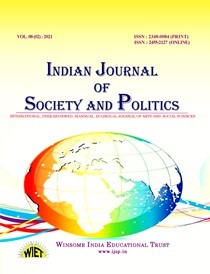Exploring the Differences between Third-Wave Feminism and Second-Wave Feminism
Ashutosh Kumar Pandey, Popelka Mitra
Affiliations:
- Assistant Professor, Department of Political Science, St. Xavier’s College, Ranchi, Jharkhand, INDIA.
- Research Scholar, Department of Political Science, Ranchi University, Ranchi, Jharkhand, INDIA
The two waves of feminism emerged in different historical contexts and have distinct goals, strategies, and areas of focus. While second-wave feminism concentrated on issues such as reproductive rights and workplace discrimination, third-wave feminism emerged in response to perceived limitations and aimed to be more inclusive and intersectional. Third-wave feminism emphasizes diversity, inclusivity, and the intersectionality of women's experiences, acknowledging the importance of race, class, sexual orientation, and disability. It celebrates women's sexuality, advocates for body positivity, and actively engages with technology and media platforms. Moreover, third-wave feminism takes a global perspective, recognizing that women's issues transcend national boundaries. The paper attempts to examines how third-wave feminism celebrates sexuality and body positivity, actively engages with technology and media, and adopts a global perspective on women's issues. While recognizing the evolving nature of feminism, this abstract presents a broad overview of the distinctions between these two waves, acknowledging their contributions to the feminist movement.
Keywords:
Third-Wave Feminism, Second-Wave Feminism, Historical Context, Goals, Strategies, Intersectionality, Diversity, Inclusivity, Sexuality, Global Perspective.






